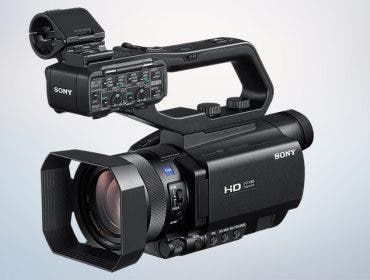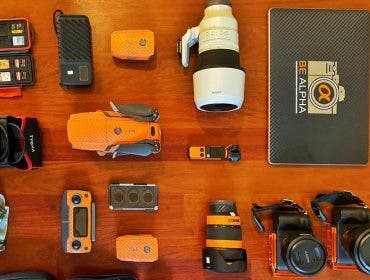Recently, I came back from a one-week trip to Iceland, where I shot more than 1,500 images exclusively with the Sony a7R IV. I encountered rain, freezing temperatures, and gusty winds. I mostly shot the 16-35mm f/2.8 GM and 24-70mm f/2.8 GM lenses.
Landscape and nature photography is my passion. Therefore, this hands-on review of the new Sony a7R IV will focus around its value for this type of photography, rather than video.

Key Specifications:
- 61.2MP BSI CMOS full-frame sensor (9504 x 6336 px)
- CIPA Image stabilization rating 5.5 stops
- Dual SD/SDHC/SDXC (UHS-II compatible)
- ISO 100-32000 (expands to 50-102800)
- 5.76M dot OLED viewfinder
- 10 fps burst shooting (JPEG or Compressed Raw from 12-bit readout)
- 4 or 16-shot high resolution modes
- 4K video from full sensor or oversampled from Super35 crop
- S-Log 2, S-Log 3 and ‘HLG’ video modes
- Battery life (CIPA rated): 670 shots
- Weight (including battery): 665 g
- Dimensions: 129 x 96 x 78 mm


Resolution and Sensor:
The headline feature of the a7R IV is, of course, the 61.2MP Back Side Illuminated (BSI) CMOS full-frame sensor. Previously, I had been shooting with the a7R III which only had a measly 42.4MP, comparatively, of course. The detail gain from the increased resolution is definitely visible — if you employ high quality lenses, place the camera on a steady tripod, and use optimal settings that minimize diffraction and noise. With increased resolution comes increased responsibility on your part. You may say, “Oh, I don’t need all that resolution because I’m not planning to make huge prints.” I agree with you. However, the increase resolution gives you flexibility in cropping. For me, it’s almost like having an extra telephoto lens. I can now shoot at 70 mm, crop away 50% of my photo, and still have a detailed 140mm equivalent 30 MP image.
The dynamic range (DR) at base ISO is impressive. I no longer need to carry around graduated neutral density filters or do extensive exposure bracketing to achieve optimal brightness in my images. For example, for a sunset shot, I just expose for the sky and let the foreground go dark. In post-processing I can bring back all the shadow detail with minimal noise penalty. Mind you, such great DR is only achievable in the lower ISO values. As ISO values exceed 320, there is a steady drop in DR.


Camera Body and Ergonomics:
The a7R IV feels more substantial in the hand than the a7R III, mainly because of the larger grip. I have medium-sized hands, and the grip feels perfect. My pinky no longer slips down below the bottom of the camera, if I’m not wearing gloves. The buttons are very responsive, larger, and have more travel distance. This all amounts to better usability with gloves on, which came in quite handy in Iceland.
The a7R IV now sports a lock button for the exposure compensation dial so your settings won’t get accidentally changed. There is also more extensive weather sealing on the a7R IV. In rainy, windy, and freezing conditions of Iceland, I had absolutely no issues with the camera. If you want to open the SD card slot, you no longer need to release a button; just pull the door back and it opens! The camera now has dual UHS-II slots and (finally) the top slot is “slot 1” and the bottom slot is “slot 2.” These may seem like insignificant changes, but they really make a huge difference to usability, shooting ease, and handling.
The higher resolution viewfinder is a pleasure to look through. It is now 5.76M dots (vs 3.68M dots on the a7R III). I know many people prefer optical viewfinders, but I love electronic viewfinders because they provide real-time feedback on setting changes, such as white balance and exposure values.
The a7R IV uses the same FP-Z100 battery as the Mark III, but has managed to improve the efficiency. Even in cold environments, I was able to get well over 800 shots per battery. In fact, my entire one-week trip was shot on just two batteries! If you’ve forgotten your charger, you can charge the battery in-camera using either the USB 2.0 Micro B or USB 3.0 type C ports. These ports also allow you to attach external battery packs so you can shoot very long exposures or extended time lapses.


Mobile App:
Although not strictly specific to the A7R IV, I want to briefly mention the new and improved Imaging Edge Mobile App that allows you to control the camera and download images with a smart device. I use an iPhone and setup was a breeze. The communication between the phone and camera also seems more stable with increase in image transfer rate. Throughout my trip, I quickly and wirelessly transferred JPEG images to my phone, performed some quick edits, and posted to Instagram. Putting myself in the picture was also super easy with the app. All I had to do was fire up the app, compose the scene as I wanted, walk to my desired spot, and press the remote shutter on the app to take the picture. It even allows for a timer delay, so you can press the shutter, put the phone in your pocket, and strike a cool pose!



Wish List:
There’s a lot to love about the a7R IV. One area of improvement might be the menu system, which may be daunting, especially if you’re new the Alpha ecosystem. However, there is an easy workaround for this: a custom menu tab where you can place all your most frequently used setting. Also, I’d love touchscreen for menu options and if touch shutter release was possible. That way, I could touch the screen where I wanted to focus and the camera would focus at that spot and release the shutter.
Finally, as a landscape shooter, I frequently have my camera in portrait orientation and quite low to the ground, so I’d love if vertical tilting was possible, just like the horizontal tilt-ability of the screen.
Overall, I can’t wait to use this camera more and more, and I’m excited to see where I’ll take it to next!






